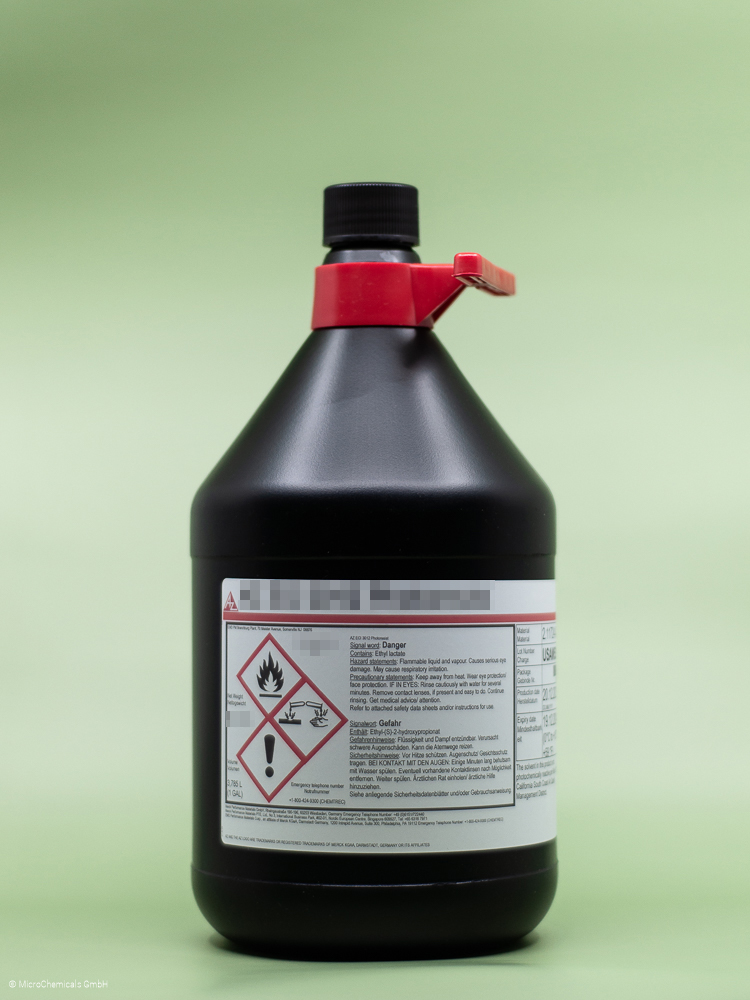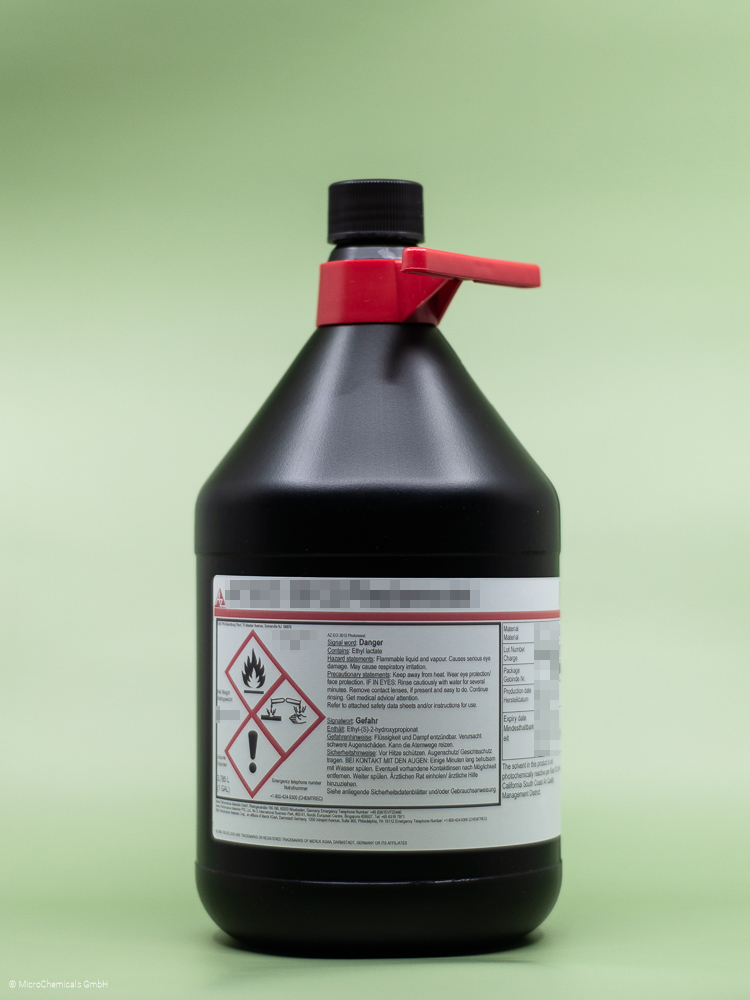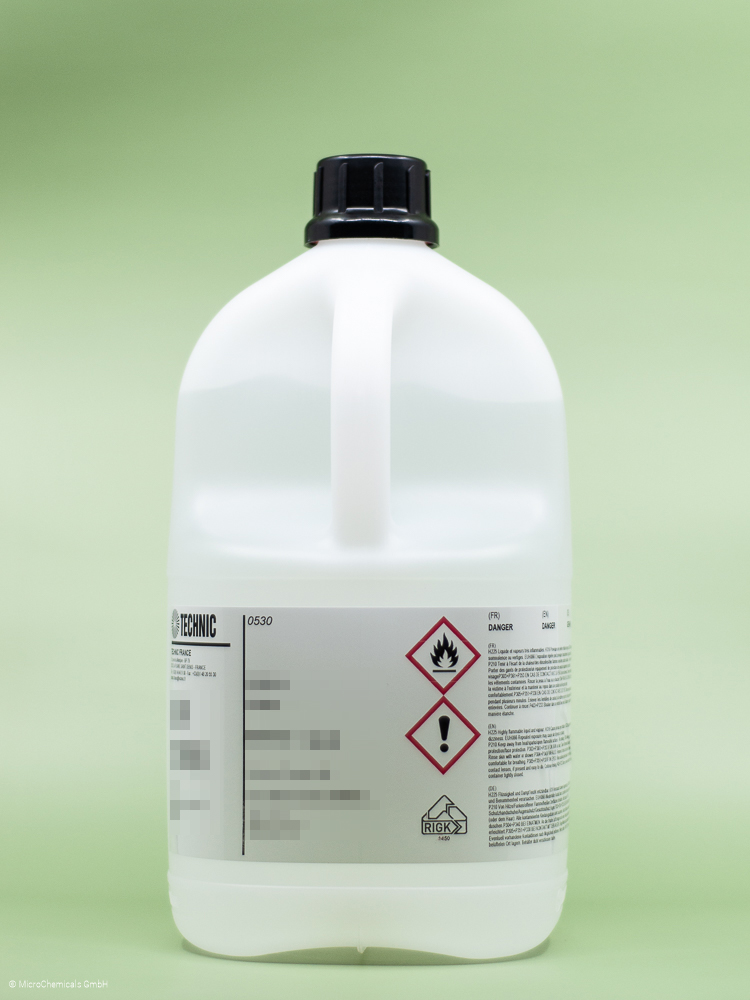AZ NLOF 2070 - diluted 1:1.33 - 0.5 µm-grade (e-beam) - 5.00 l












Product information "AZ NLOF 2070 - diluted 1:1.33 - 0.5 µm-grade (e-beam) - 5.00 l"
AZ® nLOF 2070 - diluted 1:1.33 - 0.50 µm-grade (e-beam)
Thick Negative Resist for Lift Off
General Information
AZ® nLOF 2070 Photoresist for 5-15 µm Resist Film Thickness (i-line) The AZ® nLOF 2000 series is optimised with undercut resist profiles and high resistance to thermal flow for lift-off applications. The three viscosity grades AZ® nLOF 2020 (2.0 µm resist layer thickness at 4000 rpm), AZ® nLOF 2035 (3.5 µm) and AZ® nLOF 2070 (7.0 µm) cover a large resist layer thickness range with a high possible aspect ratio. A post exposure bake is obligatory to carry out the cross-linking initiated during exposure. Beside the resist types above, MicroChemicals dilutes the AZ® nLOF 2000 series to different thickness levels.
Product Properties
- AZ® nLOF 2070 for film thickness 7.0 µm @ 3000 rpm
- i-line sensitive (365 nm), not g- or h-line sensitive
- Very high thermal stability: Almost no rounding of cross-linked resist patterns up to temperatures of 250°C and more.
- High chemical stability: Dependant on process parameters, AZ® nLOF 2000 series is stable against many organic solvents as well as strong alkaline media (however, not stable against KOH Si-etches!).
- The e-beam sensitivity of the AZ® nLOF 2000 series resists allows the combination of fast UV and high-resolution e-beam lithography. (Please contact us for further information!)
- Reproducible undercut for excellent lift off results
- High yield in industrial processes due to large process window
Developers
The recommended developer is the AZ® 2026 MIF which works best with AZ® nLof 2000 series. AZ® 326 MIF or AZ® 726 MIF are possible as well. KOH- or NaOH based developers or AZ® Developer will not give reasonable results. Only AZ® 303 Developer can be used in cases, where TMAH based developers are no option.
Removers
The recommended stripper for the AZ® nLOF 2000 series is the NMP-free TechniStrip NI555 or AZ® 910 Remover, which is compatible with all common (even alkaline sensitive) substrate materials and can even dissolve (not only peel from the substrate) cross-linked AZ® nLOF 2070 resist films.
Solvents such as NMP or the untoxic substitute DMSO are suited removers, if the resist film thickness and degree of crosslinking are not too high.
Generally, heating these removers up to 60 - 80°C, or/and ultrasonic treatment, might be required to fasten the resist removal in the case of very thick or strongly cross-linked resist films.
Thinning/ Edge Bead Removal
We recommend for thinning and edge bead removal the AZ® EBR Solvent or PGMEA. AZ® EBR Solvent 70/30 is possible as well for edge bead removal.
Further Information
MSDS:
Safety Data Sheet AZ® nLOF2070 Photoresist english
Sicherheitsdatenblatt AZ® nLOF2070 Fotolack german
TDS:
Technical Data Sheet AZ® nLOF2000 Series english
Information AZ® nLOF2000 Series english
Information AZ® nLOF2070 E-beam english
Application Notes:
Further Information about Photoresist Processing
Related products
Developer
Remover






























